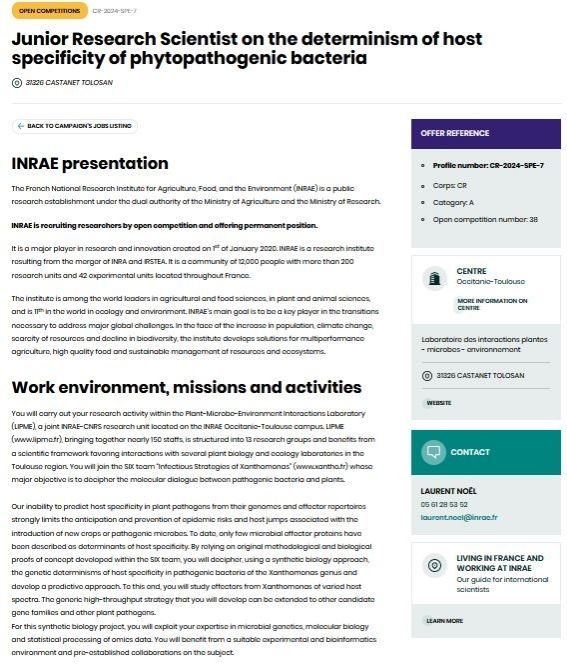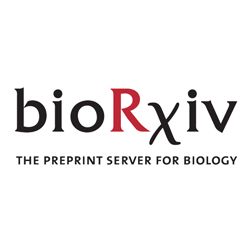#phage #phagesky #microsky
#Phages with a broad host range are common across ecosystems
www.nature.com/articles/s41...

@rkoszul.bsky.social www.nature.com/articles/s41...

@rkoszul.bsky.social www.nature.com/articles/s41...

malariajournal.biomedcentral.com/articles/10.11…
malariajournal.biomedcentral.com/articles/10.11…
tinyurl.com/yc4wtn8h

tinyurl.com/yc4wtn8h
DOI: 10.1038/s41579-024-01132-z
https://pubmed.ncbi.nlm.nih.gov/39562748/

DOI: 10.1038/s41579-024-01132-z
https://pubmed.ncbi.nlm.nih.gov/39562748/
▶️ Apply until 2024 March 5th
🔗 youtu.be/Hfpd2aZafCw
▶️ jobs.inrae.fr/en/open-compet…

▶️ Apply until 2024 March 5th
🔗 youtu.be/Hfpd2aZafCw
▶️ jobs.inrae.fr/en/open-compet…
#OpenAccess🔽
doi.org/10.1111/afe.12679
@jordancuff.bsky.social @allanwatt.bsky.social @chrisranger.bsky.social

#OpenAccess🔽
doi.org/10.1111/afe.12679
@jordancuff.bsky.social @allanwatt.bsky.social @chrisranger.bsky.social
🔗 doi.org/10.1093/molbev/msaf161
#evolbio #molbio #legionella

🔗 doi.org/10.1093/molbev/msaf161
#evolbio #molbio #legionella
https://doi.org/10.1002/ppp3.10549
https://doi.org/10.1002/ppp3.10549

Join Utrecht University as a PhD candidate decoding plant–microbiota specificity using AI. Work with SynComs, genomics, and machine learning to innovate microbiome-based solutions for…

Join Utrecht University as a PhD candidate decoding plant–microbiota specificity using AI. Work with SynComs, genomics, and machine learning to innovate microbiome-based solutions for…
None of the POC-TTT met WHO target product profile minimum requirements for #TB triage tests of 90% sensitivity and 70% specificity
www.thelancet.com/journals/ecl...
#MedSky

None of the POC-TTT met WHO target product profile minimum requirements for #TB triage tests of 90% sensitivity and 70% specificity
www.thelancet.com/journals/ecl...
#MedSky
@ginete_r from the @hgblair2205 lab will defend his thesis about antagonistic factors that impact strain specificity in host-symbiont associations!
Join us virtually on Mon, May 4th at 12pm
DM us for a link to attend
@UWBact @UTKMicrobiology https://t.co/XeQl00T5cu
@ginete_r from the @hgblair2205 lab will defend his thesis about antagonistic factors that impact strain specificity in host-symbiont associations!
Join us virtually on Mon, May 4th at 12pm
DM us for a link to attend
@UWBact @UTKMicrobiology https://t.co/XeQl00T5cu
#FungalGenomics @mfseidl.bsky.social
www.biorxiv.org/content/10.1...

#FungalGenomics @mfseidl.bsky.social
www.biorxiv.org/content/10.1...

🪰
Happy to see this large data release and analysis of decades of #tachinidae collected by #DanJanzen, #WinnieHallwachs and the #parataxonomists of #ACG @gdfcf.bsky.social in #CostaRica. So much diversity!
Paper here:
doi.org/10.3390/d170...
Data here:
doi.org/10.5683/SP3/...
🪰
🧪




🪰
Happy to see this large data release and analysis of decades of #tachinidae collected by #DanJanzen, #WinnieHallwachs and the #parataxonomists of #ACG @gdfcf.bsky.social in #CostaRica. So much diversity!
Paper here:
doi.org/10.3390/d170...
Data here:
doi.org/10.5683/SP3/...
🪰
🧪
www.nature.com/articles/s41... @nature.com

www.nature.com/articles/s41... @nature.com
Find out more: www.path.ox.ac.uk/news-article...

Find out more: www.path.ox.ac.uk/news-article...

